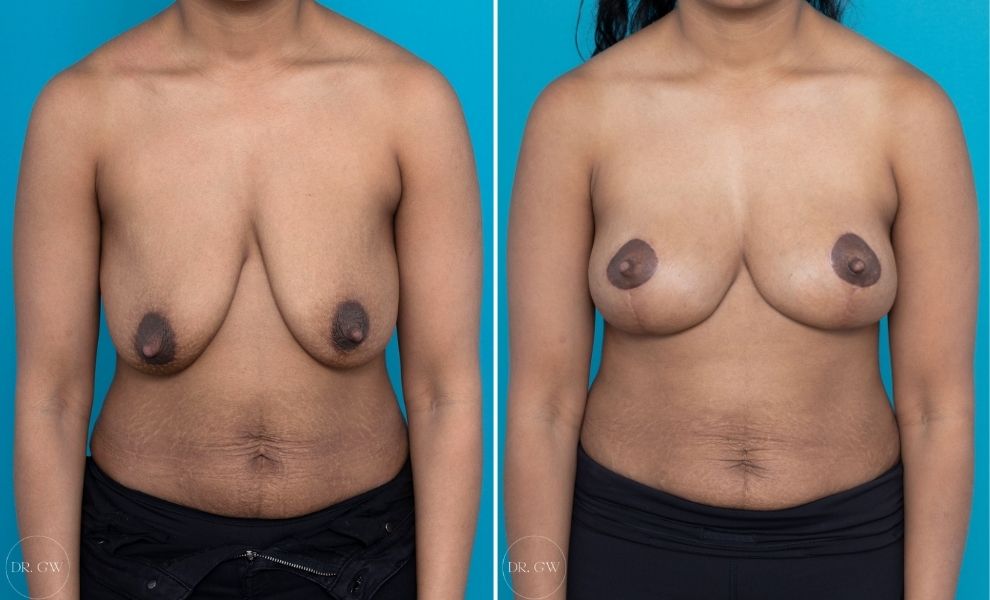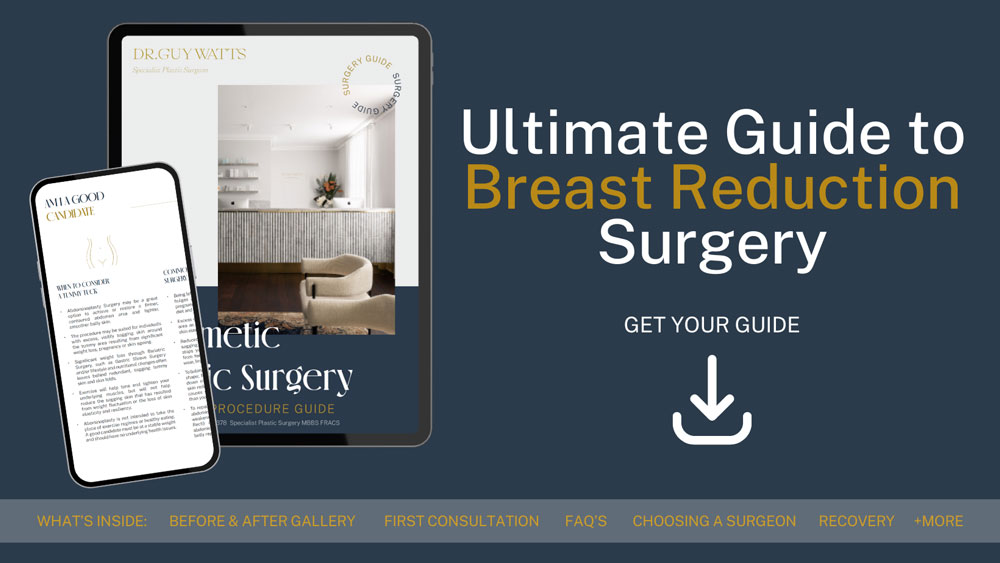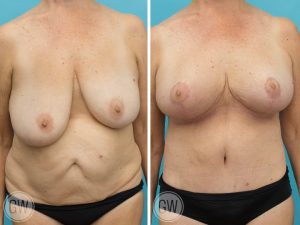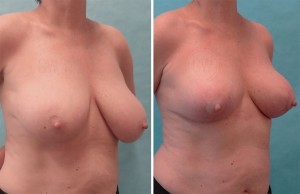
22 Mar What Causes Breast Ptosis – Causes and Surgery for Breast Ptosis
Breast Ptosis Causes and Treatment Options
Breasts are subject to gravity’s unrelenting pull over time. As women age or experience significant weight fluctuations, their breast tissue can start to lose elasticity and firmness, causing the skin to loosen and breasts to drop. This condition is called breast ptosis, and it affects most women at some point in their lives. In this blog post, we’ll explore the various causes of breast ptosis and how it can be alleviated with surgery.
Based in Perth, Western Australia, Specialist Plastic Surgeon Dr Guy Watts, is a respected member of the Australian Society of Plastic Surgeons and the Royal Australasian College of Surgeons. He performs different breast procedures on patients looking for aesthetic alteration.
Take our quiz, and find out if you are ready for surgery
Main Causes of Breast Ptosis
The main causes of breast ptosis include:
- Age: As a woman ages, her skin loses elasticity, and the supporting structures of the breasts, such as ligaments, may weaken, causing the breasts to drop lower on the chest wall.
- Pregnancy and breastfeeding: During pregnancy and breastfeeding, the breasts undergo significant changes, which can cause the ligaments that support the breasts to stretch.
- Weight fluctuations: Significant weight gain or loss can cause the skin to stretch or contract.
- Genetics: Some women may be predisposed to developing skin laxity of the breasts due to genetic factors, such as skin elasticity and breast size.
- Smoking: Smoking can damage the skin’s elasticity and contribute to premature ageing, which can cause breast ptosis.
- Poor posture: Constantly slouching or hunching over can cause the breasts to descend over time.
It’s worth noting that some of these factors may be out of our control, but there are still steps women can take to help prevent or slow down the process of breast ptosis.
Myths about Breast Ptosis
There are many myths surrounding breasts that have excess skin and sit lower than expected on the chest wall, and it’s important to separate fact from fiction. Here are some common myths about breast ptosis:
1. Exercise can reverse breast ptosis
While exercise can strengthen the muscles underlying the breasts, it cannot remove excess loose skin on the breasts. Excess skin is primarily caused by the loss of skin elasticity and damage to the ligaments that support the breasts, which cannot be reversed with exercise alone.
2. Only older women experience breast ptosis
Breast ptosis can occur at any age, and women can experience it due to weight fluctuations, genetics, or hormonal changes. At the same time, it is worth mentioning that breast ptosis can occur even in due to the overly large size of the breasts.
3. There are non-surgical ways to alleviate breast ptosis
While there are things you can do to alter the aspect of the breasts and try to prevent breast ptosis, there are no effective non-surgical ways to treat breast ptosis. Wearing a well-fitting, supportive bra, maintaining a stable weight, and practicing good posture can all help slow down the process of breast ptosis, but these won’t make your breasts sit higher on the chest wall if you are dealing with breast ptosis.
The images may contain nudity and are not intended for persons under the age of 18. Viewer discretion is advised.
Photo disclaimer: Each surgical procedure produces unique outcomes influenced by factors such as body composition, skin tone, laxity, age, and genetics. The before-and-after photographs displayed are of actual patients who have consented to having their images displayed and are provided for informational purposes only. These outcomes are specific to the individuals shown and may not be representative of all patients. Surgical procedures carry risks, and results may vary. A consultation with your surgeon will provide more personalised information about potential outcomes and risks.
1. Breast Lift to Adjust Descending Breasts
Breast lift surgery, also known as mastopexy, is a surgical procedure that can help alleviate the appearance of breast ptosis. During a breast lift, your surgeon removes excess skin and reshapes the breast tissue to alter the breast’s appearance and position.
The surgery is performed under general anaesthesia and involves making incisions on the breast to remove excess skin and reshape the underlying tissue. The length and placement of the incisions depend on the severity of breast ptosis. After the surgery, the breasts are wrapped in bandages or a surgical bra, and patients are advised to avoid strenuous activities for several weeks.
It is important to note that breast lift surgery does not significantly change the size of the breasts. Women who desire an increase in breast volume may opt for breast augmentation as well as a breast lift. On the other hand, women who want to reduce the size of their breasts may choose to have breast reduction surgery.
Like any surgery, breast lift surgery carries risks, including infection, bleeding, scarring, and changes in nipple sensation. Recovery time may also vary, and it is important to follow post-operative instructions carefully. Read our blog on Recovery after Breast Lift.
2. Breast Reduction for Breast Ptosis
Breast reduction surgery can be an effective way of alleviating breast ptosis. Breast Ptosis/ laxity can occur due to excess breast weight. A breast reduction removes excess breast tissue, fat, and skin to reduce breast size and lift the breasts to a higher position on the chest.
During a breast reduction surgery, your plastic surgeon will make incisions around the areola and down the breast, removing excess tissue to alter the appearance and contour. The size and placement of the incisions will depend on the degree of ptosis and the volume of the breasts.
Breast reduction surgery can also potentially alleviate back, neck, and shoulder pain caused by the weight of large breasts, as well as posture issues that are a result of heavy breasts.
3. Can Breast Augmentation Alleviate Breast Ptosis?
Breast augmentation alone is not an effective way to alleviate significant breast ptosis. Breast ptosis occurs due to a loss of skin elasticity and breast tissue volume, and breast augmentation involves increasing the size of the breast by inserting implants.
While breast augmentation can reduce the appearance of mild breast ptosis, it will not lift the breast to a higher position on the chest. In some cases, breast augmentation may even worsen the appearance of breast ptosis if the added weight of the implants causes further stretching of the breast skin and tissue.
In cases of moderate to severe breast ptosis, a breast lift (mastopexy) is usually necessary to reposition the breast tissue and alter the breast contour. A breast lift can be performed alone or in conjunction with breast augmentation to both lift the breast and increase its size.
DOWNLOAD DR WATTS’ GUIDE TO BREAST REDUCTION

7 Recommendations to Prevent Breast Ptosis
While some factors that contribute to breast ptosis, such as genetics and ageing, are beyond our control, there are several things you can do to help prevent or reduce breast ptosis:
- Wear a supportive bra: Wearing a properly fitting bra that provides adequate support can help reduce skin laxity by preventing the breast tissue from stretching and loosening over time. Make sure to choose a bra that fits well and provides enough support for your breast size and shape.
- Maintain your weight: Significant weight gain or loss can cause breast tissue to stretch, which may not retract after. Maintaining a stable weight through a balanced diet and regular exercise can help prevent or reduce the amount of excess skin on and around the breasts.
- Stay hydrated: Drinking enough water helps maintain skin elasticity, which can help prevent breast ptosis.
- Avoid smoking: Smoking can cause skin to lose elasticity, which can contribute to breast ptosis.
- Exercise: Regular exercise can help tone the chest muscles and increase overall breast shape and firmness.
- Protect your skin from the sun: Sun damage can cause the skin to lose elasticity, which can contribute to breast ptosis. Use sunscreen when exposed to the sun and wear protective clothing to reduce sun exposure.
- Consider breastfeeding techniques: Prolonged breastfeeding can also lead to breast ptosis, but using proper breastfeeding techniques, such as supporting the breast during feeding, can help reduce the severity.
It’s important to keep in mind that some degree of breast ptosis is part of the ageing process, and everyone’s body is unique.
FAQs about Breast Ptosis and Surgery for Breast Ptosis
Can lax breasts be firm again?
- While it may not be possible to return breasts to their original firmness, there are ways to alter their appearance and make them look firmer.
- Regular exercise, particularly strength training, can help tone and strengthen the chest muscles, which can alter the overall appearance and firmness of the breasts.
- Maintaining a stable weight through a balanced diet and regular exercise can also help prevent or reduce breast ptosis by reducing the strain on the breast tissue.
- Additionally, wearing a properly fitting bra that provides adequate support can help prevent further issues regarding the appearance of the breasts.
- Breast surgery is the only effective method to alter the breasts and provide long-lasting results. Breast lift is the surgery performed to elevate the breasts. However, a breast augmentation with implants can alleviate mild breast ptosis. At the same time, breast reduction can alleviate the appearance of excess, loose skin on the breasts and help avoid an ulterior breast ptosis if your breasts are overly large.
When do breasts start to lose elasticity?
- Loss of breast elasticity can occur at different times for different women, but it generally occurs as a part of the ageing process.
- Breast Ptosis occurs when the ligaments and skin that support the breasts lose their elasticity and strength over time. This can cause the breasts to descend or drop.
- Some factors that may contribute to breast ptosis include the ageing process, pregnancy and weight fluctuations.
- Depending on the volume of the breasts, they can drop earlier or later in life.
- Most women with overly large breasts are often confronted with the early onset of breast ptosis.
How can I alleviate breast ptosis without surgery?
- It is not really possible to reduce breast ptosis without surgery. However, there are some steps you can take to help alleviate their appearance. Regular exercise, keeping a stable weight, good posture and massaging the breasts can potentially help their overall appearance.
What is the main cause of breast ptosis?
- The main cause of breast ptosis is the ageing process. As women age, their skin loses elasticity and the ligaments that support the breasts can weaken, causing them to drop. However, there are other factors that can contribute to breast ptosis, including weight gain, menopause, pregnancy, smoking and genetics.
Further Reading about Breast Surgery with Dr Guy Watts Perth Plastic Surgeon
- Read Dr Watts’ Breast Augmentation Surgery Page
- Read Dr Watts’ Breast Reduction Surgery Page
- Read Dr Watts’ Breast Lift Surgery Page
- See Dr Watts’ Breast Implants Gallery
- Read Dr Watts’ blog about Surgical Options to Get Firmer Breasts
- Read Dr Watts’ blog about Types of Breast Implant Incisions
- Read Dr Watts’ blog about Recovery after Breast Lift
Medical References about Breast Ptosis
About Dr. Guy Watts – MED0001539378
FRACS (Plas) – Specialist Plastic Surgeon In Perth WA
Dr. Guy Watts is a Specialist Plastic Surgeon (AHPRA MED0001539378) with an extensive career that spans across renowned plastic surgery clinics worldwide. His experience has been honed through invaluable experiences at esteemed establishments such as the New York Eye and Ear Infirmary and the renowned Pitanguy Clinic in Brazil.
Having collaborated with the foremost cosmetic plastic surgeons on a global scale, Dr. Watts has chosen to return to Perth after a 17-year journey of intensive training and invaluable professional experience to bring the latest practices and technology in cosmetic plastic surgery to his patients.
Dr. Watts is a Fellow of the Royal Australasian College of Surgeons (FRACS) and a Member of the Australian Society of Plastic Surgeons (ASPS), Australasian Society of Aesthetic Plastic Surgeons (ASAPS) and the International Society of Aesthetic Plastic Surgeons (ISAPS).
Read about the potential Risks and Complications of Surgery
Read the Patient Information and Resources
About CLINISPA
Clinispa is Dr Watts’ bespoke medical clinic performing Cosmetic Aesthetic treatments. At Clinispa, we offer advanced clinical treatments in a luxurious and calming environment, tailored to support your skin’s health and appearance.
Clinispa aesthetic services are performed by Dr Guy Watts’ nursing professionals, who have a passion for and solid understanding of facial aesthetics.
All Clinispa clients are considered individually, with a personalised treatment plan consisting of advanced scientific approaches to cosmetic aesthetics. We incorporate innovative technologies in conjunction with superiorly formulated skin care.
For more information about the full range of Clinispa Aesthetic of Cosmetic Treatments visit the Clinispa website











Sorry, the comment form is closed at this time.